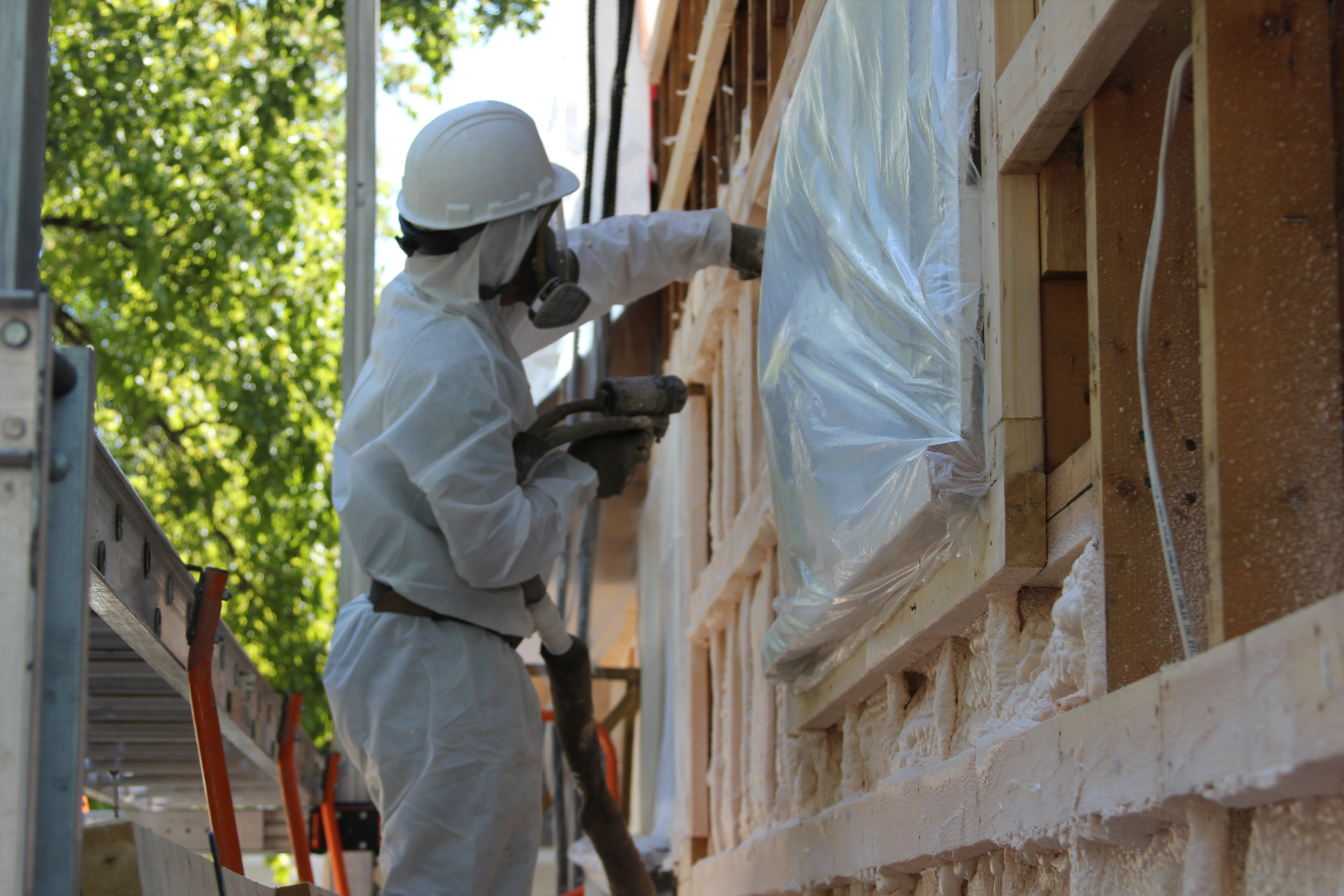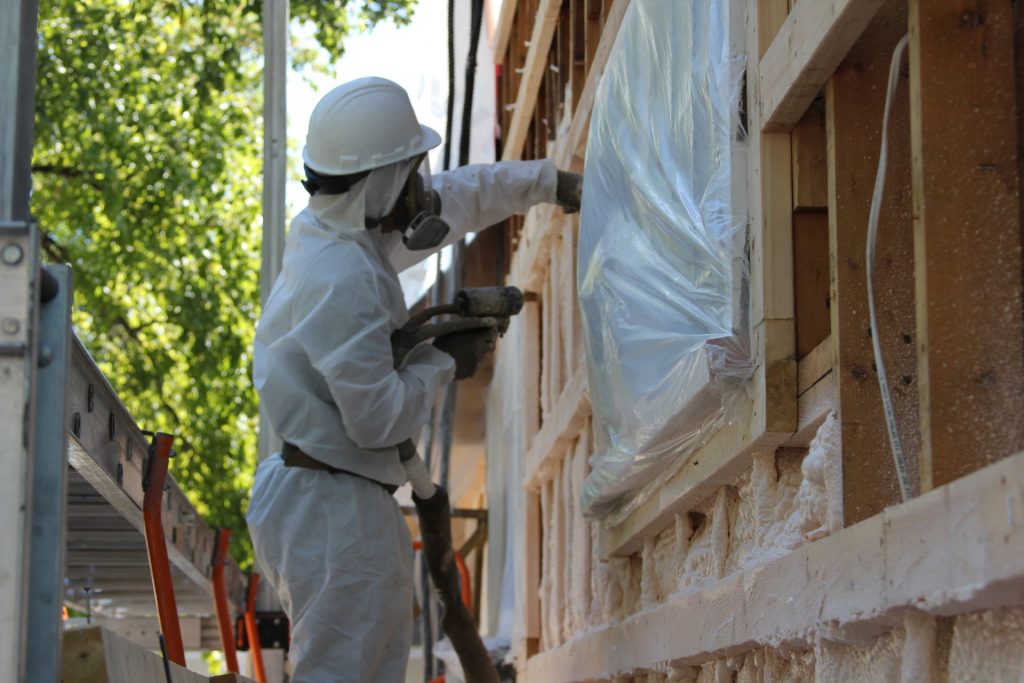Choosing Spray Foam Insulation In Winnipeg
The Superior Choice for Winnipeg’s Extreme Climate
Winnipeg homeowners know all too well the challenges of extreme temperatures. From frigid winters to sweltering summers, keeping your home comfortable and energy-efficient can feel like an uphill battle. But what if there was a home insulation solution that not only tackled these issues, but also offered additional benefits like moisture control, energy savings and soundproofing? Enter spray foam insulation, the game-changer in home insulation services.
Spray foam insulation is a revolutionary insulation and air sealing solution that offers superior thermal performance and creates an airtight barrier to enhance your home or building’s energy efficiency, comfort, and overall air quality. Unlike traditional insulation, spray foam insulation expands upon application to fill holes, eliminating air leaks and drafts that can lead to energy loss, discomfort and higher monthly bills.
Why We Recommend Spray Foam Insulation
At Above All Insulation, we understand the importance of maximizing energy efficiency while maintaining a healthy, comfortable living or working environment. We strive to provide a seamless spray foam insulation installation. Polyurethane foam insulation is quickly becoming the preferred choice for specific new-home insulation applications and renovations in existing buildings. The many benefits make it easy to choose spray foam insulation to replace your old insulation and our experienced professionals in installing spray foam insulation will be happy to provide a free estimate today for your home insulation needs.
Spray foam insulation is an expanding foam that can be used to provide not only a vapour barrier, draft stop, but is also a high R value insulation for attics, walls, basements and crawl spaces. Our quality spray foam insulation services give you confidence in a safe and high-performing installation. There is no better material to use in tall cathedral ceilings and attic slopes, especially when installed in combination with our roofing work. Spray foam insulation is also the material of choice for foundation walls and joist header areas, and can easily be applied by itself (4″= R value of R-24) or can be used in conjunction with batting (fibreglass or rock wool) in a basement frame wall.
- Unmatched Energy Efficiency: Unlike other insulation services, spray foam insulation forms an air tight seal, eliminating drafts and significantly reducing heat transfer. This translates to a cozier home in winter and a cooler one in summer – with lower energy bills year-round.
- Moisture Barrier: Winnipeg’s humidity can lead to moisture problems like mold and mildew. Spray foam insulation acts as a vapour barrier, keeping moisture out and protecting your home’s structural integrity and air quality.
- Enhanced Comfort: Say goodbye to drafty rooms and uneven temperatures. Spray foam insulation creates a consistent thermal envelope, ensuring every corner of your home stays comfortable.
- Soundproofing: Enjoy a quieter home as spray foam insulation absorbs sound vibrations, reducing noise pollution from both inside and outside.
- Long-lasting Investment: While the initial cost of spray foam insulation might be higher than traditional insulation, the long-term savings on energy bills and reduced maintenance costs make installing spray foam insulation a wise investment for Winnipeg homes.
Types of Spray Foam Insulation: Open-Cell vs. Closed-Cell
There are two types of spray foam insulation – open cell and closed cell. The type of spray foam insulation we use is closed-cell, which means the tiny spaces in the spray foam insulation are not connected to each other and are packed tightly together. This 2 lb/cubic ft-density foam insulation will not absorb water and forms an effective moisture barrier. Closed-cell polyurethane spray foam insulation has a higher R value (at R-6 per inch) and better performance than other types of insulation because of its high density.
The spray foam insulation we use will not settle, sag, crack, shrink or deteriorate. It adds structural strength in an attic or wall. By expanding to fill every crack and crevice, spray foam insulation stops air leakage in and out. It resists mould and mildew and stops indoor allergens from sneaking into your home through small open spaces and gaps. It does not release harmful or smelly chemicals after curing when installed properly. Renewable materials like soy oil, corn oil, castor oil, and sugar are used in the composition of spray foam insulation, as well as post-consumer recycled materials.
- Open-cell Spray Foam: Ideal for interior walls and attics, it expands to fill cavities and provides excellent soundproofing.
- Closed-cell Spray Foam: Denser and more rigid, it’s perfect for exterior walls, your basement and crawl space, offering superior vapour barrier with an airtight seal and higher insulation r value.
Where Can You Install Spray Foam Insulation?
Spray foam insulation is incredibly versatile and can be applied in various areas of your home:
- Attics: A major source of heat loss, properly insulated attics can dramatically improve your home’s energy efficiency.
- Walls: Whether new construction or retrofitting, installing spray foam insulation for wall insulation can significantly enhance your walls’ thermal resistance.
- Basements and Crawl Spaces: Keep your basement and crawl space areas dry, comfortable, and free from mold with spray foam’s superior moisture resistance and vapour barrier.
The Above All Insulation Difference
At Above All Insulation, we pride ourselves on our commitment to quality, safety, and customer satisfaction. We use only the highest quality spray foam insulation products and employ certified installers to ensure a flawless application. Our spray foam installation team is dedicated to providing personalized solutions tailored to your unique needs and budget.
Get Your Free Quote Today!
Discover the difference, install spray foam insulation!
Ready to experience the difference? Let Above All Insulation be your partner in creating a more comfortable, energy-efficient, and healthier home; choose spray foam insulation today. Don’t let another Winnipeg winter or summer catch you unprepared— install spray foam insulation services. Contact Above All Insulation today for a free estimate and home insulation consultation. Our spray foam insulation experts will assess your home’s unique needs and recommend the best spray foam insulation solution for your comfort, energy efficiency savings, and peace of mind.
Contact us for a free estimate today.

